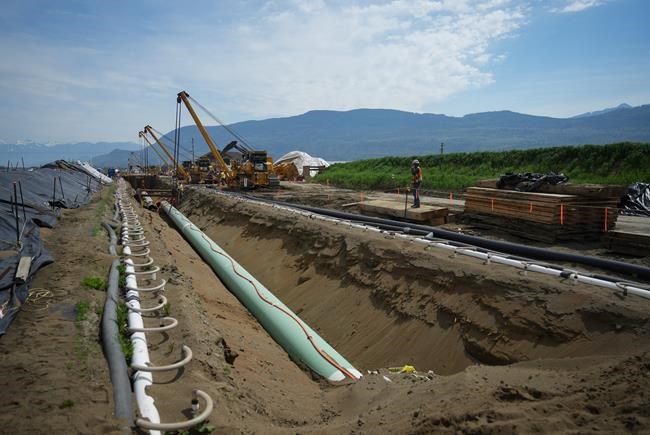Can scheduling an audit avoid another FTX-like moment?

After FTX collapsed after the now-bankrupt crypto exchange invested its users’ money to reduce its own risk, crypto exchanges came up with a transparency solution called Proof of Reserve. .
A practice recently approved by Binance CEO Changpeng Zhao provides a way for exchanges to demonstrate that they are providing transparency to their users in the absence of explicit regulation.
All crypto exchanges must be Merkle Tree Proof of Reserve.
Banks operate on partial reserves.
Crypto exchanges should not.@Binance Proof of reservation will start immediately. Full transparency.— CZ Binance (@cz_binance) November 8, 2022
A Proof of Reserves (PoR) is an independent audit conducted by a third party to confirm that the custodian holds the assets it claims to own on behalf of the client.
This auditor takes an anonymized snapshot of all balances held and aggregates them into a Merkle tree.
Merkle is a cryptographic commitment scheme in which each “leaf” or node is labeled with a cryptographic hash of a data block. Their primary use is to validate data processed, transmitted, or stored between computers. Invented in 1979, the concept is widely used in blockchain peer-to-peer networks.
After taking the snapshot, the auditor gets the Merkle root. This is a cryptographic fingerprint that uniquely identifies the combination of these balances at the time the snapshot was taken.
The auditor then collects the digital signatures generated by the cryptographic exchange. This proves ownership of the address on-chain with a publicly verifiable balance. Finally, the auditor compares and verifies that these balances exceed or match the client’s balance represented by the Merkle tree, ensuring that the client’s assets are held on a full reserve basis. to
A total of five centralized exchanges (CEX), including Kraken, Bitmex, Coinfloor, Gate.io, and HBTC, are planning similar plans for Binance, OKX, KuCoin, Huobi, Poloniex, Crypto.com, Deribit, and Bitfinex. are announcing.
Recently: Banks still show interest in digital assets and DeFi amid market turmoil
The PoR practice made sense and was applauded by many in the crypto community as it seemed like a step towards a more transparent crypto ecosystem. A centralized exchange can record the liability of each account on the public ledger that holds a particular asset. Public anonymity is maintained because it must be published with a tag that only the account owner can know.
Hassan Sheikh, co-founder of decentralized venture capital firm DAO Maker, told Cointelegraph that PoR provides a clear sum of liabilities that can be matched against assets. He added that his excellent PoR practice could make it very difficult for exchanges to forge liabilities, explaining:
“If the debt is forged, users can publicly warn. Even if 1% of users have trouble authenticating, there is no CEX where users fall into that cautious 1%. Small accounts are almost always verified, and CEX can do well by skipping just a fraction of small accounts before being detected.”
He added that “the asset disclosures that exchanges are doing will ultimately make sense” using publicly disclosed liabilities that can be easily verified by retail investors, adding that these audits will He added that outstanding balances “retain weight only under the assumption that liabilities are properly represented.”
Ben Sharon, co-founder of digital asset management firm Illumishare SRG, told Cointelegraph that fraudsters will try to fake audits no matter how credible evidence of reserves is. He added that the Residency Audit is still a viable step to check cryptocurrency exchanges, but it is not enough and suggests other measures such as: did:
“Having a separate cash reserve, an asset-backed token, or even better, both in addition to a preliminary proof of evidence provides investors with a much better solution. The solution is full transparency: when crypto exchanges are fully transparent, users should not be afraid to trust their assets.”
Showing proof of debt-free reserves means nothing
PoR practices are becoming more acceptable to centralized exchanges and a lot of PoR audit data is starting to be published, but the problem is that crypto platforms move funds right after an audit snapshot is taken. There are more.
Crypto.com recently transferred 280,000 Ether (ETH) to Gate.io addresses after releasing a PoR audit, fueling rumors that crypto exchanges may be faking reserve audits. Many in the cryptocurrency community argued that exchanges borrowed assets to show a healthy financial book, only returning them shortly after the snapshot.
Crypto.com CEO Kris Marszalek further fueled suspicion by revealing that the $400 million ETH transfer was a mistake and was intended to be sent to another cold wallet.
It was supposed to be a move to a new cold storage address, but it was sent to a whitelisted external exchange address. We worked with the Gate team and the funds were then returned to cold storage. New processes and features have been implemented to prevent this from happening again.
— Chris | Crypto.com (@kris) November 13, 2022
Also, some exchanges provide a detailed breakdown of their reserves during PoRs, while others simply claim to be in the black and provide a quick response. Nexo just came up with a one-page snapshot of him having more assets than customer deposits of about $3.2 billion.
Looking at some of the reserve audits published by the exchange, Philipp Zimmerer, a core contributor to the decentralized financial protocol Spool.fi, told Cointelegraph that the main issue is accurately structuring a proper PoR audit. He said there are no formal rules for doing so. This means that procedures differ between exchanges. he explained:
“Even if implemented in the most conscientious interpretation, proof of reserves cannot prove exclusive ownership of a private key or detect funds borrowed to manipulate the results of an audit. In general, exchanges and auditors are trustworthy to begin with and nothing can be proven 100%.”
He further said there is no value in showing assets without showing liabilities. It has undergone a comprehensive and complete audit.” He gave the example of Coinbase, a publicly traded company that makes its assets and liabilities publicly available.
Zimmerer also noted that another US-registered exchange, Kraken, conducts regular audits and publishes the results publicly.
Stefan Rust, CEO of data infrastructure provider Truflation, told Cointelegraph that, looking at early implementations of PoR, it seems like a good first step, but more trust and better transparency are needed. To get there, a more sensible approach would be to look holistically. Create a balance sheet and monitor liabilities while being transparent about capital reserves. It’s not just the reserves, it’s the exposure the company has.
For FTX, there were over 130 companies that sold their liabilities and income. The same thing happened with WeWork and many other bombings on corporate property. Last says:
“Preliminary proof is the first step. Proof of liability is great and, in light of FTX, a must-have edition. Finally, some sort of proof of incorporation or consolidation between affiliates. Markets and communities need to be educated not only on how to use them, but also on the benefits of these tools, why decentralization is really an integral part of not only the cryptocurrency ecosystem, but the future of finance and the Web3. It is important for users to understand the
Don Guillaume, Head of PR and Communications at Gate.io, told Cointelegraph when asked about the most reliable way to monitor cryptocurrency exchanges. Over the past few years, regulators have taken aggressive steps around the world to ensure that cryptocurrency exchanges, and indeed all companies operating in the cryptocurrency industry, are regulated and comply with the rules of law. I’ve seen ”
Recently: Can Hong Kong Really Become China’s Proxy in Cryptocurrencies?
Overall, the impact of the FTX demise has heightened calls for increased regulatory oversight of the cryptocurrency market. Key market players continue to provide some form of transparency to regain public confidence, but experts believe that evidence of reserves alone cannot be relied upon.
Can scheduling an audit avoid another FTX-like moment?
Source link Can scheduling an audit avoid another FTX-like moment?




